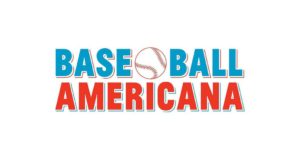Librarian of Congress Carla Hayden’s baseball roots aren’t in Washington, but she knows the sense of pride that baseball fans in the nation’s capital feel toward their team and national pastime.

“They represent the capital, and the team in the capital, and this is the all-American game,” she said, previewing the Library of Congress’ new exhibit, Baseball Americana, which opened Friday amid the buildup to the 89th All-Star Game July 17 at Nationals Park.
Washington baseball fans can find plenty of nuggets at the exhibit, which runs through the summer of 2019. Video of Nats ace Max Scherzer celebrating a no-hitter is among the looping video highlights that greet visitors. A larger-than-life portrait of Hall-of-Famer Walter Johnson, from one of his early baseball cards, looms over part of the gallery. Exhibits include baseball cards of a 19th Century Washington club and the lineup card from Bryce Harper’s first game with the Nationals in 2012.
Hayden especially appreciates the celebration of baseball’s cultural diversity. She recalls watching the St. Louis Cardinals with her grandfather in the early 1960s, and how the atmosphere changed when the San Francisco Giants and Willie Mays came to town. “On those days,” said the first African American and first woman librarian of Congress, “the stadium was filled with more people who looked like me,”
Several pieces highlight the mixture of cultures and nationalities that make the game what it is today, and its evolution from a segregated past. Baseball cards depicting an all-white Washington team from 1887 are contrasted with an uncut sheet of 1994 Bowman cards, which include players of African American, Latin American and Asian heritage.
A tribute to Jackie Robinson includes photos, a comic book and Robinson’s hand-written 1950 letter thanking former Dodgers president Branch Rickey for signing him and breaking baseball’s color barrier.
The exhibit also celebrates the accomplishments of girls and women, including Dottie Key of the All-American Girls Professional Baseball League and Mo’ne Davis, the first girl to pitch a winning game in the Little League World Series.
Another section illustrates how the game gave immigrants an opportunity to assimilate American Culture, helped players rise from poverty to riches and, became the multi-billion-dollar business it is today.
Baseball Americana also paints a vivid picture of the game’s evolution. Visitors can see a 1786 letter by a Princeton student, recognized as the earliest printed mention of baseball in America, and the 1857 “Laws of Base Ball.” The 14-page document, considered the “Magna Carta” of the game, standardized nine-player lineups, nine-inning games and 90-foot baselines.
Pieces on loan from the Baseball Hall of Fame illustrate how the game’s equipment has changed over the years, from a fingerless glove and a wire mask used in the 19th Century to Ichiro’s Mizuno glove and Jose Molina’s fiberglass, leather, foam, and metal catcher’s gear from the 2009 All-Star game.
The exhibit also highlights changes in stadiums, the fan experience, media coverage, strategy and statistics and pays tribute to stage shows, films, songs and broadcasters. Fans can also test their knowledge and imagination in an interactive quiz.
Baseball Americana is part of the Library of Congress’ Summer of Baseball, a series of events and programs that celebrate the game, including a vintage baseball clinic based on the game’s 19th-century rules, a children’s performance about African American ballplayers and a conversation with “Moneyball” author Michael Lewis. All are free and open to the public.






